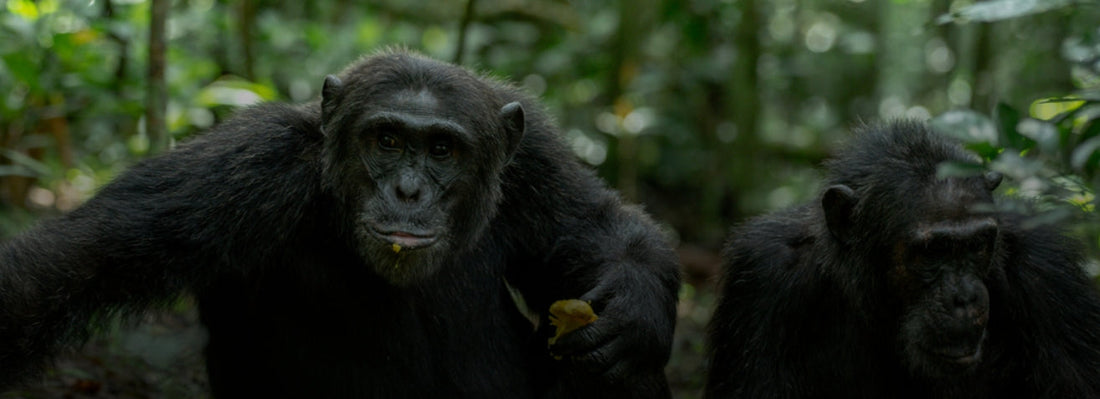
Kibale Forest National Park
Share
Kibale National Park - The Primate Capital of the World
Experience the Kanyanchu Primate Walk – Kibale’s Premier Wildlife Adventure
Kibale National Park is renowned for its extraordinary primate diversity, and the Kanyanchu Primate Walk stands as the park’s flagship experience. This immersive trek offers visitors a rare chance to encounter 13 different primate species, with diurnal monkeys such as red colobus, black-and-white colobus, L’Hoest’s monkey, and grey-cheeked mangabey frequently spotted in the forest canopy. However, the undisputed highlight of this walk is the Kibale chimpanzees—one of Uganda’s greatest wildlife spectacles.
Since 1993, the Kanyanchu chimpanzee community has been intensively monitored and habituated to human presence, significantly improving the chances of sightings. With a sighting success rate of over 90%, visitors are almost guaranteed an unforgettable encounter with these intelligent primates in their natural habitat.
Location: Kabarole district, Western Uganda
Size: 321 km2
Altitude: 1,160m - 2,607m
Guided Chimpanzee Tracking Walks
Guided chimpanzee tracking walks are conducted daily at 8:00 AM, 11:00 AM, and 2:00 PM, starting from the Kanyanchu Visitor Centre. These treks typically last between two to five hours, depending on the chimpanzees’ movements and other factors such as weather and terrain. Upon finding the chimpanzees, visitors are allowed one hour in their presence to observe their social interactions, playfulness, and feeding habits, offering an unparalleled window into their fascinating lives.
To ensure a sustainable and intimate experience, each tracking group is limited to six participants, and all visitors must be at least 16 years old. Arriving early for registration and a pre-trek briefing is strongly advised, as rangers will provide essential guidelines on chimpanzee behavior and safety protocols. Advance booking is mandatory to secure a slot for this highly sought-after experience.
Kibale’s Remarkable Biodiversity
Beyond its renowned primates, Kibale National Park boasts an astonishing biodiversity. The park is home to over 120 other mammal species, including olive baboons, forest elephants, bush pigs, duikers, and rare antelope species. Bird enthusiasts will be equally delighted, as Kibale shelters approximately 370 bird species, with 23 Albertine Rift endemics such as:
- Nahan’s francolin – a globally threatened ground-dwelling bird
- Cassin’s spinetail – a fast-flying forest-dweller
- Blue-headed bee-eater – a strikingly colorful species often spotted along forest edges
- Lowland masked apalis – an elusive warbler found in dense vegetation
Kibale’s Thriving Chimpanzee Population
Kibale supports one of the largest populations of wild chimpanzees in Uganda, estimated at over 1,500 individuals, distributed across at least 12 distinct communities. Four of these communities have been habituated for tourism and research, with the Kanyantale chimpanzee community being the most prominent for visitor tracking. This group has been open to tourists daily since 1993, making it one of the longest-running chimpanzee tracking programs in the world.
For those seeking an even deeper experience, Kibale also offers the Chimpanzee Habituation Experience, which allows visitors to spend an extended period following a semi-habituated chimpanzee group as they go about their day.
With its unmatched primate diversity, breathtaking scenery, and rich ecosystems, Kibale National Park remains one of Africa’s premier destinations for wildlife enthusiasts, photographers, and nature lovers. A visit here promises a truly immersive and unforgettable encounter with Uganda’s wild beauty.
Plan Your Journey
When to visit Kibale National Park
The park is accessible year-round, with a dry season from June to September and December to February, and a wet season from March to May and October to November. The wet season offers excellent bird-watching opportunities despite heavy rainfall.
How To Get to Kibale National Park
By Road
The quickest route to Kibale National Park from Kampala city is through the Kampala-Fort Portal highway. The park can be reached over a fully-tarmacked road for a distance of 326 kilometers (approximately 6 hours). For tourists overnighting in Fort portal city, the park is only an hour’s drive away.
There is also the alternative but longer option of going through Mbarara city with an optional stopover at Lake Mburo and Queen Elizabeth National Park.
By Air
Whereas there aren’t any direct flights into the park, tourists can either schedule or charter flights from Entebbe International Airport or Kajjansi Airstrip to Kasese Airstrip through one of the domestic carriers. The flight lasts about 1 hour. From here tourists will transfer by road for about 2 hours to the park headquarters. There is also the option of chartered flights to Fort Portal for 1 hour and 30 minutes.
What to bring while trekking the Gorillas
To enjoy the gorilla-tracking exercise, carry along the following:
- Carry rain gear or a Rain Coat for changeable weather.
- Sunscreen and a hut for the random weather.
- Water and food – Hiking boots with a good grasp are ideal for the steep mud-overed slopes.
- Carry binoculars mainly for watching birds and far animals.
- Gloves
- A warm cardigan
- Thick trousers and a long
- Long sleeved tops are ideal for tracking.
- Video- filming is allowed in the parks though not outside the park
- Waterproof container for their cameras
- If you wish to wear a hat, a baseball cap is recommended.
· You can also hire most of the above from the SAFARI MOOD office.
